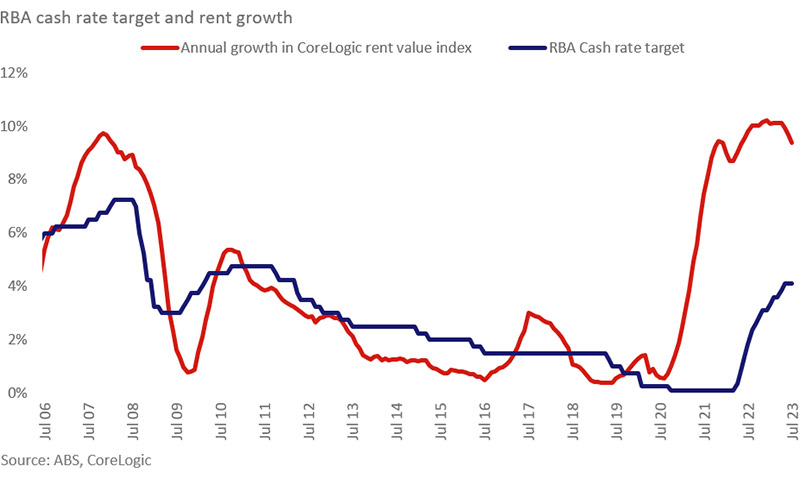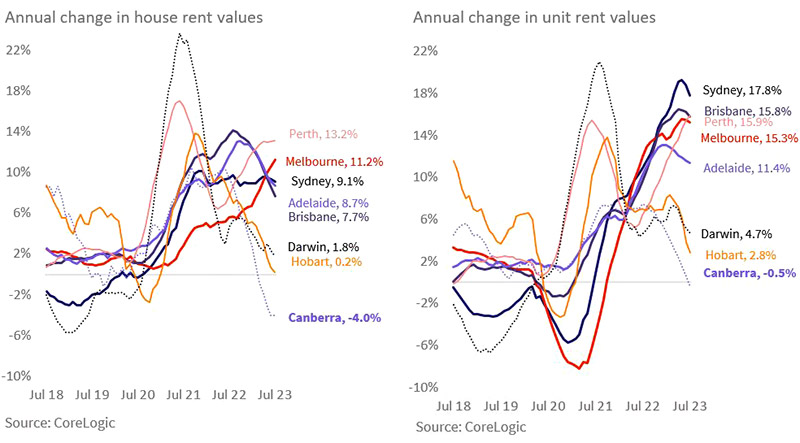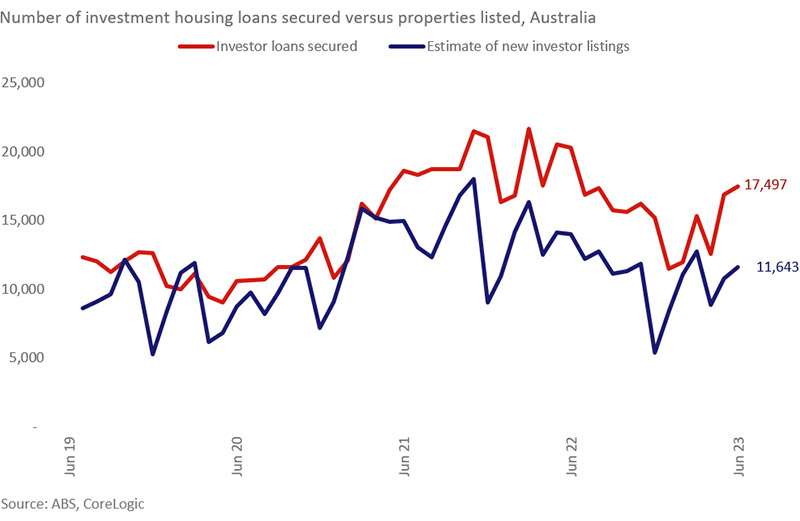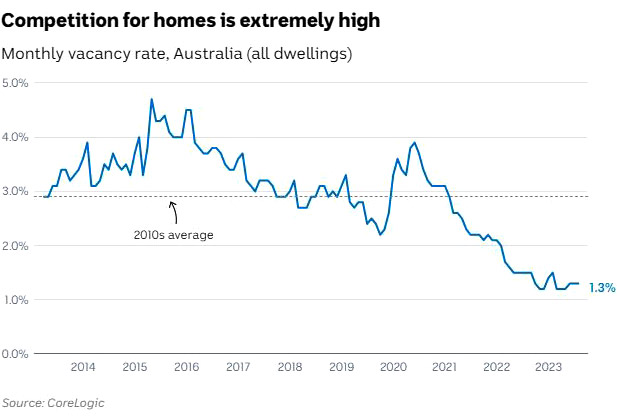Rents still rising but set to fall in 2024
The seemingly endless torrent of rent increases may be coming to an end, with economic indicators pointing to an easing of the rental crisis in 2024.
Rents have continued their inexorable rise but there are, at long last, signs that they may retreat in 2024.
Rental affordability continued to worsen over the quarter, declining in New South Wales, Victoria, Queensland and Western Australia, but improved in the other states and territories.
The proportion of income required to meet median rent increased nationally to 23.4 per cent, according to the Real Estate Institute of Australia Housing Affordability Report. This was an increase of 0.4 percentage points over the quarter, and an increase of 0.6 percentage points over the past 12 months.
Renters may soon breathe a sigh of relief, and investors take a deep breath, with signs emerging that the constant rent increases may be coming to an end.
Rents have traditionally moved in tandem with interest rates but since July 2020 rents have massively outpaced what is regarded as a rapid pace of interest rate hikes.
CoreLogic’s rent value index has dipped in the past month, and with rent hikes likely to abate soon rents can be expected to level out in response.

Eliza Owen, Head of Residential Research, CoreLogic, said other factors were also at play.
Income growth was slowing and rental affordability reaching its limits.
“Income growth could be another metric that slows next year and as income growth slows, renting households may look to adjust their housing situation, and re-form share houses,” Ms Owen said.
Renters also tend to be on lower incomes, which means there could be a ceiling on how high rents can go before tenants adjust their housing preferences, she said.
“In the 12 months to June last year, ABS data showed more affordable (Queensland) rental markets like Logan – Beaudesert and Ipswich to have the first and third highest volume of net internal migration across the country.
“This overtook the Gold Coast, which had the highest net internal migration in the previous year.
“Such internal movements could ease demand in the most expensive rental markets, bringing down overall growth in the national rents.”
Most rental markets are now increasing but at a slower pace, and in the case of Canberra now falling, with Hobart likely to follow suit.
Rental affordability is improving in South Australia, Tasmania, Northern Territory and the ACT while most other states had declines of less than 1.0 percentage points.

It’s still a difficult time for renters but the newly released REIA July quarter figures offer some hope that the worst may be over.
Tasmania remains the most unaffordable state to rent, with the rent-to-income ratio sitting at 27.3 per cent, followed by New South Wales (27.0 per cent), the Northern Territory (25.5 per cent), South Australia (23.5 per cent), Queensland (21.5 per cent), Western Australia (22.0 per cent), Victoria (20.1 per cent) and the ACT (19.7 per cent).
“Since our last quarterly report, there has been a chaotic campaign to introduce rent freezes and rent controls by political stakeholders,” Hayden Groves, President, REIA said on Monday (18 September).
“National Cabinet, to their credit, have listened to the economic arguments and decided against market intervention.”
“The reality is that for Australian households on median incomes, housing affordability has declined 13.6 per cent over a 20-year period and 12.4 per cent over the past 10 years.
“In comparison, rental affordability has declined 1.3 per cent over a 20 year period, improved 0.9 per cent over a 10 year period but declined 0.5 per cent over the past five years.
“This will vary market by market, but it is critically important when considering policy responses in the current environment.”
PropTrack Senior Economist and report author, Angus Moore said upward pressures on rents still existed.
“Rental markets remain extremely tight across much of the country, and rents are growing quickly amid strong demand and limited rental availability.
“International migration and population growth are forecast to remain strong, which will further add to housing demand.”
But for 2024, each of the major banks is now forecasting a decline in the cash rate. Ms Own said any reduction in interest rates could increase demand from housing investors.
“Increased investment purchases add to rental supply, which may serve to lower rent growth.
“Expectations that the Reserve Bank of Australia (RBA) will be done with rate hikes in 2023 may even be contributing to an early recovery in investment activity.
“Investment loans are offsetting the rate at which new investment listings are being added to the market.”

Sales listings on the rise
The rise in investor loans comes as Sydney and Melbourne lead a surge in new properties hitting the market.
Nationally, new listings on realestate.com.au were up 20.5 per cent month-on-month in August, according to data released by PropTrack on Wednesday (19 September)
New listings were up 4.1 per cent compared to the same time last year, marking the first positive year-on-year change since August 2022.
“Activity is likely to continue increasing over the spring selling season, reaching the typical peak in October and November,” Mr Moore said.
“Selling conditions and home prices have also improved compared to late 2022.
“The cash rate has remained steady at 4.1 per cent for three consecutive months and while there may still be further interest rate increases, markets are pricing in only a small probability of that occurring.
“Inflation appears to be heading back towards target at a pace consistent with the RBA’s expectations.”






















